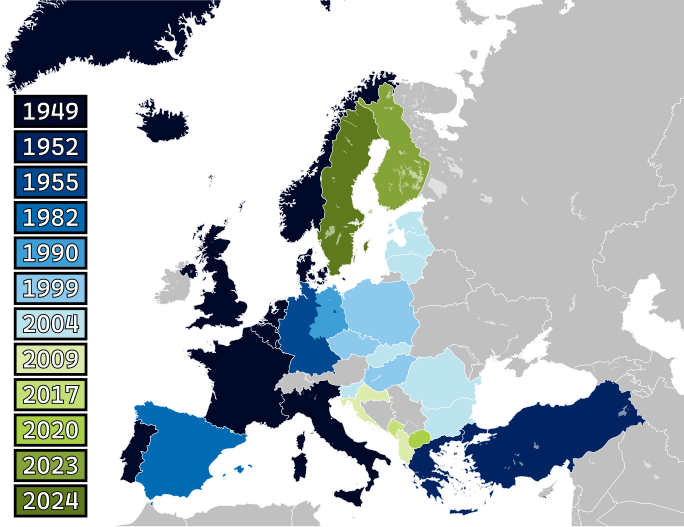Understanding NATO Countries and Their Global Role

Introduction
The North Atlantic Treaty Organization (NATO) is a military alliance that plays a crucial role in international security and defence. Established in 1949, the alliance was initially created for mutual defense against the Soviet Union during the Cold War. In the current geopolitical climate, understanding NATO countries is significant not only for military collaboration but also for political and economic stability in the region.
Current NATO Membership
As of 2023, NATO comprises 31 member countries, reflecting a mix of North American and European nations. The founding members include the United States, Canada, Belgium, France, the United Kingdom, Italy, Netherlands, Luxembourg, Norway, Denmark, Portugal, and Iceland. Over the years, NATO has expanded to include nations from Central and Eastern Europe, such as Poland, Hungary, and the Czech Republic, which joined in the 1990s following the dissolution of the Soviet Union.
Recent additions include Montenegro in 2017 and North Macedonia in 2020, positioning NATO as a central player in European and transatlantic security. The organization operates on the principle of collective defense stated in Article 5 of the North Atlantic Treaty, which asserts that an attack on one member is considered an attack on all.
Significance of NATO
The relevance of NATO has grown in recent years due to increasing tensions involving Russia, particularly following its annexation of Crimea in 2014. This action prompted NATO to enhance its defense strategies and increase military presence in Eastern Europe. Countries like Estonia, Latvia, Lithuania, and Poland have benefitted from NATO’s collective defense mechanisms, further integrating their security frameworks with NATO forces.
NATO also engages in various partnerships beyond its member states, working with non-member countries to promote peace and security. These partnerships have expanded NATO’s influence and capabilities globally, addressing challenges like terrorism and cyber threats.
Conclusion
As the geopolitical landscape evolves, understanding NATO countries remains vital for grasping the dynamics of global security. The alliance continues to adapt to new threats and challenges, ensuring its member states are equipped to respond effectively. For readers, this means recognizing the evolving role of NATO in fostering international stability and cooperation. It is essential to engage with the alliance’s initiatives, as they not only encompass security interests but also reflect the political and economic ties that shape the modern world.









